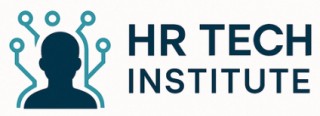
Defining Training Needs Assessment
What is Training Needs Assessment?
Training Needs Assessment (TNA) is a crucial process in the realm of human resources, focusing on identifying the precise training requirements within an organization. This assessment seeks to bridge the gap between current employee skills and the desired level of performance by aligning training programs with organizational goals.
Essentially, TNA serves as the foundation for any effective training program. It involves an in-depth analysis aimed at pinpointing gaps in skills, knowledge, and abilities among employees. By conducting a thorough needs assessment, companies can enhance employee performance by providing targeted, relevant training opportunities.
The process is not merely about recognizing what training is needed, but understanding why it's necessary, thereby tailoring programs to meet both organizational and individual objectives. To delve deeper into innovative approaches and digital solutions in this field, explore the insights offered here.
Identifying Skill Gaps
Spotting Skills and Knowledge Gaps
Identifying skill gaps in employees is a crucial step in any training needs assessment process. These gaps often arise when there is a discrepancy between what the employees currently know or can do, and what is required for them to perform their job effectively in alignment with organizational goals. The analysis of training needs begins with a thorough examination of job performance to identify where employees may be lacking in specific skills or knowledge. This type of needs analysis involves looking closely at both the current and desired performance levels of an individual to pinpoint areas needing improvement. By identifying these gaps, organizations can tailor their training programs to address the specific needs of their workforce and enhance overall employee performance. It is vital for a company to systematically conduct training needs assessments to establish which skills are necessary for employees to succeed in their roles. This ensures that any training program implemented is effective and addresses the real needs of the workforce, transforming weaknesses into strengths. Moreover, taking a strategic approach to understanding organizational and individual needs is essential for aligning training initiatives with broader organizational goals. This holistic perspective can drive employee engagement and optimize job performance by targeting the precise areas where development is necessary. For further insights into how these gaps can be leveraged in evolving contexts, organizations may find value in referring to resources that explore changes in training dynamics, such as The Transformation of HR Training in the Wake of COVID.Tools and Technologies for Assessment
Utilizing Modern Tools for Comprehensive Evaluation
In the rapidly evolving landscape of human resources, technological tools have become indispensable allies in the assessment journey. When conducting a thorough training needs analysis (TNA), these technologies enable companies to efficiently identify and bridge skill gaps, enhancing both organizational and individual performance. One prominent technology in this sphere is Learning Management Systems (LMS). LMS platforms do more than just deliver training programs. They collect valuable data on employee engagement, completion rates, and performance metrics. This information is crucial for understanding which areas need stronger focus and which strategies are yielding the most favorable results. Additionally, online surveys and assessments have been transformed by technology. Companies can now easily survey employees to gain insights into their skills and knowledge. This data not only uncovers areas where training programs might be needed but also helps in aligning organizational goals with employee growth. Moreover, collaboration tools have seen significant advancements. Platforms such as inter-departmental communication systems allow for seamless sharing of knowledge and feedback, which can be integrated into needs assessments to refine training goals. Integrating these tools into your TNA process can undoubtedly streamline the data collection and analysis phase. The insights gained from modern tools offer a clear roadmap for what effective training looks like and how it can be achieved. For more on crafting effective training and performance strategies, check out this article on crafting effective goals. Leveraging the right tools ensures that your assessment training is thorough, data-driven, and aligned with your company's objectives.Integrating Data Analytics
Integrating Data Analytics into the Process
In enhancing the effectiveness of training needs analysis, integrating data analytics has become indispensable. Organizations are now leveraging data-driven insights to carefully tailor training programs, aligning them closely with both organizational goals and individual employee needs. Identifying skill gaps requires a thorough examination of both job performance metrics and skill mastery indicators, which data analytics can provide with accuracy.
Data analytics helps organizations gather and interpret diverse data points, making the assessment process methodical and grounded in evidence. This approach not only pinpoints where skill and knowledge deficits exist but also enables the anticipation of future training needs. Algorithms and data models analyze employees' performance data, aiding in forecasting trends that impact training requirements.
By utilizing analytics in training needs assessments, companies can avoid a one-size-fits-all approach, fostering personalized learning pathways instead. Such precision ensures that skills and knowledge are targeted effectively, supporting both individual growth and organizational advancement. Furthermore, continuous data collection and analysis facilitate the monitoring and measurement of training program outcomes, thereby refining future training strategies and enhancing overall employee performance.
Challenges in Implementation
Tackling Obstacles in Implementation
Implementing a robust training needs assessment process presents its fair share of challenges. Organizations often struggle with aligning the assessment results with their strategic goals, making it tricky to fully reap the benefits of TNA. The complexity of needs assessments can sometimes obscure the clarity necessary for setting clear objectives. Integration of data and resources is a significant challenge faced by HR departments. While identifying skill gaps and conducting analysis are crucial, converting the wealth of data into actionable insights can be daunting. The ultimate goal is to create a tailored training program that aligns with both organizational goals and individual employee growth. Moreover, employee engagement in the TNA process is essential but not always easily achieved. Employees may perceive assessments as evaluative rather than developmental, hindering honest feedback about their skills and needs. Creating an environment that supports open dialogue about training and development is crucial for effective training implementation. Resistance to change also plays a role. Employees and management alike may be skeptical about new assessment tools and technologies, which can slow down the adoption of innovative assessment methods. Overcoming these barriers requires a strategic approach, often involving clear communication about the benefits and goals of the training programs. Lastly, resource allocation can be a hurdle. Dedicated time and financial resources are necessary to conduct thorough TNAs and follow through with the required training programs. Ensuring that the company prioritizes these resources effectively is essential for achieving optimal job performance and employee growth. Navigating these obstacles is key to enhancing employee performance and ensuring that training needs analysis aligns with the organization's overarching objectives. By addressing these challenges, companies can unlock the full potential of their assessment programs and drive significant improvements in both knowledge and skills.Future Trends in Training Needs Assessment
Emerging Directions in Training Needs Analysis
The landscape of training needs analysis is continuously evolving in response to various dynamic factors such as technological advancements, changing workplace environments, and emerging employee expectations. As organizations strive to align their goals with enhanced employee performance, they must keep an eye on future trends that are likely to shape the way we assess training needs.
This evolution in training needs analysis emphasizes the incorporation of more sophisticated data analytics tools, as previously discussed. Companies are leveraging technology to refine their understanding of skill gaps and individual training requirements, leading to more personalized training programs. By using AI and machine learning, organizations can predict training needs, optimizing the deployment of resources effectively.
Another prominent trend is the increasing focus on continuous learning. Instead of merely conducting isolated training sessions, organizations are expected to create environments that encourage ongoing development. This approach not only addresses the current skills gaps but also prepares employees for unforeseen challenges. As the job market becomes more volatile, fostering a continuous learning culture can significantly improve job performance and meet organizational goals.
The integration of remote and hybrid work models has also influenced training needs assessments. In the post-pandemic era, many employees are working virtually, which requires organizations to rethink the traditional training delivery methods. An emphasis on digital platforms and virtual training modules is crucial for both individual and organizational growth.
While these trends provide promising directions for future training needs assessments, overcoming the challenges in implementation, such as resistance to change and aligning with organizational objectives, remains vital. However, as companies adopt these innovations, there is a greater possibility of achieving not just effective training, but a comprehensive enhancement of employee skills and abilities.













